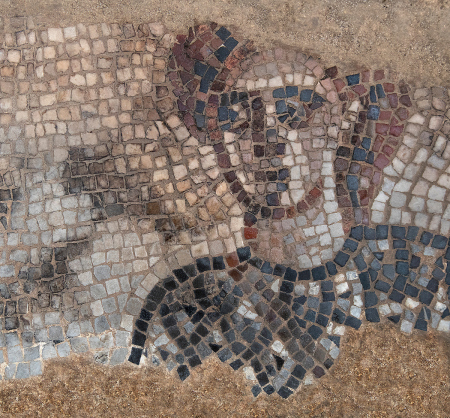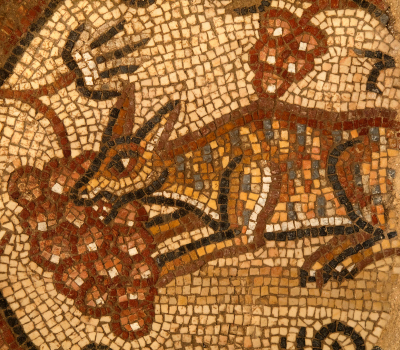UNC excavation crew in Galilee region of Israel uncover first known depictions of biblical heroines

An excavation team in Israel has discovered the first known depiction of two biblical heroines from the Old Testament.
University of North Carolina at Chapel Hill professor Jodi Magness led a team of students and specialists to Israel’s Lower Galilee region, where a decadelong effort has been underway, unearthing nearly 1,600-year-old mosaics in an ancient Jewish synagogue at Huqoq.
Following a pause due the COVID-19 pandemic lockdowns, the Huqoq Excavation Project focused its 10th season on the southwest part of the synagogue, which researchers believe was built in the late fourth to early fifth century C.E.
The synagogue’s floor is decorated with a large mosaic panel that is divided into three horizontal strips, or registers, each telling a story from the book of Judges, according to Magness.
The dig — led by project director Magness and assistant director Dennis Mizzi of the University of Malta — unearthed a large mosaic panel depicting the events of Chapter four of Judges, where the prophetess and judge Deborah and military commander Barak lead the Israelites in victory over the Canaanites, led by the general Sisera.
According to the Bible, Sisera fled to the tent of Jael, a Kenite woman, who ended up slaying the general by driving a tent peg through his temple while he slept.
Part of the mosaic unearthed at Huqoq depicts Barak equipped with a shield and Deborah gazing at him from under a palm tree. The middle register is only fractionally preserved, while the lowest register shows Sisera bleeding and dead as he lay on the ground.
Deborah is one of only five women described as a prophet in the Old Testament and is the only female judge mentioned in the Bible.
Magness told The Christian Post that the depiction of Deborah and Jale is remarkable, particularly due to where it was discovered.
“We will need some time to fully explore and understand the significance of this find, but the obvious importance is the depiction of two female heroines in a prominent place in an ancient synagogue,” said Magness.

Another new find at Huqoq is a fragment inside a wreath containing a Hebrew inscription flanked by panels with two vases that hold sprouting vines, according to Magness. The vines form the shape of the medallion that frames four animals — a hare, a fox, a leopard and a wild boar — eating clusters of grapes.
Over the dig’s last 10 seasons, several more mosaics have been uncovered, including: panels depicting Samson and the foxes from Judges 15:4; Samson carrying the gate of Gaza on his shoulders (Judges 16:3); another panel depicting a man leading an animal on a rope accompanied by an inscription reading “a small child shall lead them” (Isaiah 11:6); and what researchers believe is the first non-biblical story ever found on an ancient synagogue, possibly in reference to a legendary meeting between Alexander the Great and the Jewish high priest.
Magness said the discovery of two additional scenes with Samson taken from Judges “seems to be more than coincidence," but that more time is needed to “study and consider the reasons behind the selection of these scenes by the synagogue congregation.”
Other biblical mosaics recovered from the nave, or main hall, of the synagogue include panels depicting Noah’s Ark, the parting of the Red Sea, and the building of the Tower of Babel.
The synagogue itself was rebuilt during the 14th century (known as the Mamluk period), possibly in conjunction with the rise in the number of pilgrims making their way to the Tomb of Habakkuk, which is located nearby, and “appears to be the first Mamluk period synagogue ever discovered in Israel, making it no less important than the earlier building,” said Magness.
Crews have since removed the mosaics from the site for conservation.
Excavations are scheduled to resume next summer, according to the group.





















